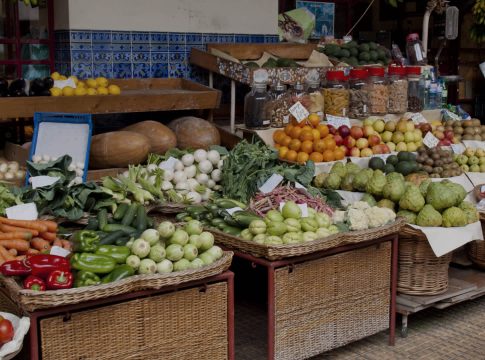Kenya’s Culinary Crisis: A Storm of Unaffordable Ingredients
The aroma of sizzling onions and the vibrant hues of fresh tomatoes—these are the staples that pepper Kenyan kitchens and bring rich flavors to beloved dishes. But right now, these scrumptious essentials are slipping through fingers like sand, thanks to an unexpected twist in the weather.
Rainy Days Meet Dry Pockets
After a prolonged period of drought, heavy rains have rolled into Kenya, bringing not just a flood of water but also a downpour of challenges for farmers and food lovers alike. In the charming town of Murang’a, just a heartbeat away from Nairobi, grocers are grappling with dwindling supplies and skyrocketing prices. The result? A culinary catastrophe unfolding on the plates of ordinary Kenyans.
With crops struggling to thrive amidst erratic weather, those tantalizing onions, juicy tomatoes, and crisp carrots are turning into luxury items. Imagine this: the price of a sack of onions soaring from 4,000 Kenyan shillings to a jaw-dropping 6,500 KSh (that’s a whopping $30 to $50!). For families living on an average monthly salary of around $590, these price hikes feel akin to a culinary nightmare.
The Heartbeat of Community Suffers
Small-scale farmers are feeling this pinch fiercely. One farmer poignantly noted that this crisis is impacting their children’s education and essential household projects. With food shortages tightening their budgets, many patrons are forced to rethink their meals, sometimes unable to afford even a basic plate. The ripple effects of these escalating costs reverberate through households, touching lives and altering everyday dining experiences.
The Bigger Picture: A Warming World
This crisis is not merely a flash in the pan; it reflects an alarming trend fueled by the global climate crisis. Africa, warming more rapidly than the rest of the planet, is seeing some parts experience food inflation rates exceeding 30%. While Kenya grapples with its woes, neighboring nations like Zimbabwe and Sierra Leone are also feeling the heat. The situation underscores a dire need for sustainable solutions that not only boost yields but also protect the planet.
Cooking Up Solutions: Sustainable Farming Inspiration
So what can be done? Farmers are ringing the alarm bells, calling for government interventions to pull them out from this culinary quagmire. But addressing these challenges requires both immediate action and forward-looking solutions.
Here’s where innovation and tradition can unite beautifully.
-
South African ingenuity: Farmers are adopting sustainable methods that enhance crop yields while conserving resources. These practices inspire a future where fields flourish despite adversity.
- Cameroon’s Zai technique: A traditional method that involves planting in small pits nourished with organic matter can rejuvenate barren soil and maximize moisture retention.
Savvy Shopping: Stretching Your Ingredients
But it’s not just up to the farmers. We can all contribute to easing this crisis right in our own kitchens! Here are a few delicious tips:
- Make vegetables the star: Focus your meals on veggies, stretching out those flavors while keeping costs down.
- Embrace preservation: The power of pickling or freezing your favorite ingredients can provide that delightful burst of flavor long after they’ve been harvested.
- Choose wisely: Combine imports with local produce when possible—support your farmers and enjoy diverse flavors.
Conclusion: Cooking with a Cause
As we face food inflation head-on, it’s important to remember that every meal tells a story. By choosing sustainable practices, advocating for farmers, and being smarter with our kitchen habits, we can savor the flavors of Kenya while gently nurturing the earth. So, let’s bring the spirit of community back to our tables—because in every bite, there’s a tale waiting to unfold.

Covers wellness, nutrition, mental health, and daily life tips.
Bio: Talia brings a background in health journalism and holistic living to help readers live better, one tip at a time.

